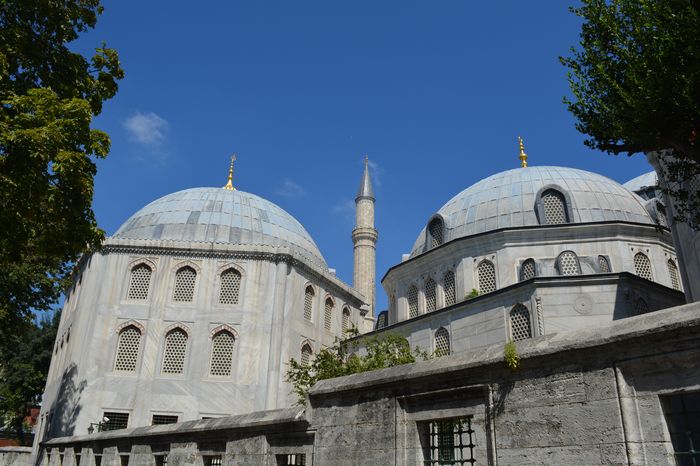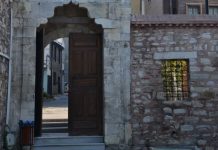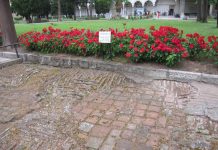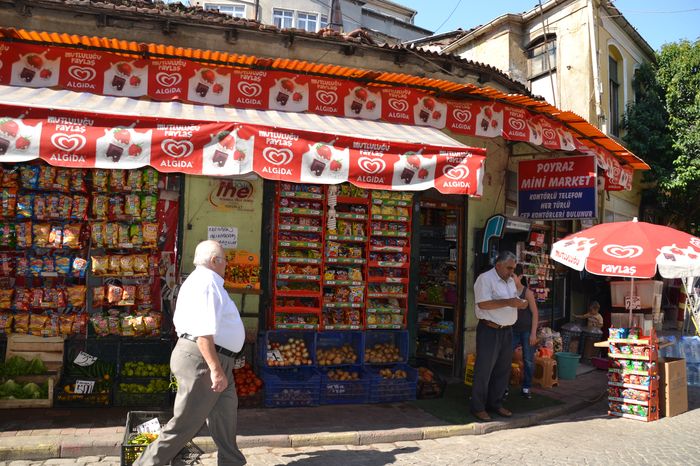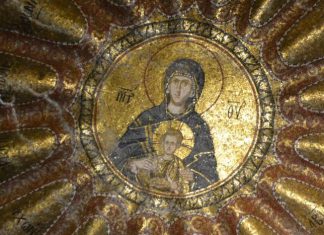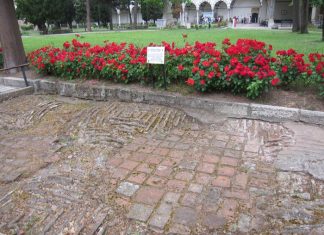Only this much is certain: that in those early centuries local diversities are found everywhere; and that, even although Italy may have received the most manifold influences from the East, and particularly from Byzantium, still, on the other hand, the language, laws and customs of Rome prevailed in Byzantium, or at least were strongly represented there.
In the church, now the mosque, of St. Sophia (Hagia Sophia — “Divine Wisdom”), built by Justinian, all the principal forms of the early Christian churches are represented. A rotunda is enclosed in a square, and covered with a dome which is supported in the direction of the long axis of the building by half-domes over semicircular apses.
In this manner a basilica, 236 feet long and 98 feet wide, and provided with domes, is developed out of a great central chamber. This basilica is still more extended by the addition of smaller apses penetrating the larger apses. Then the domical church is developed to the form of a long rectangle by means of two side aisles, which, however, are deprived of their significance by the intrusion of massive piers. In front of all this, on the entrance side, are placed a wide atrium with colonnaded passages and two vestibules (the exonarthex is practically obliterated).
The stupendous main dome, which is hemispherical on the interior, flatter, or saucer-shaped, on the exterior, and pierced with forty large windows over the cornice at its spring, has its lateral thrust taken up by these half domes and, north and south, by arched buttresses; the vertical thrust is received by four piers 75 feet high. The ancient system of column and entablature has here only a subordinate significance, supporting the galleries which open upon the nave. Light flows in through the numerous windows of the upper and lower stories and of the domes.
Triangular surfaces by means of which a circular dome
But above all, the dome, with its great span carried on piers, arches, and pendentives, constitutes one of the greatest achievements of architecture. (These pendentives are the triangular surfaces by means of which a circular dome can be supported on the summits of four arches arranged on a square plan.) In other respects the baptistery of Sta. Costanza at Rome, for example, with its cylindrical drum under the dome, has the advantage that the windows are placed in the drum instead of the dome.
The architects of St. Sophia were Asiatics: Anthemius of Tralles and Isodorus of Miletus. In other great basilicas, as here, local influences had great power in determining the character of the architecture, e.g. the churches of the Nativity, of the Holy Sepulchre, and of the Ascension, built in Palestine after the time of Constantine. This is still more evident in the costly decorations of these churches.
Read More about Byzantine Architecture
